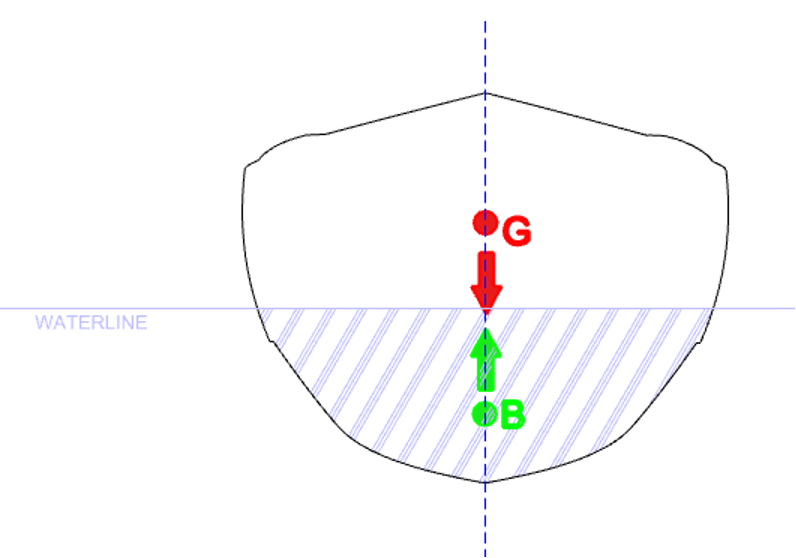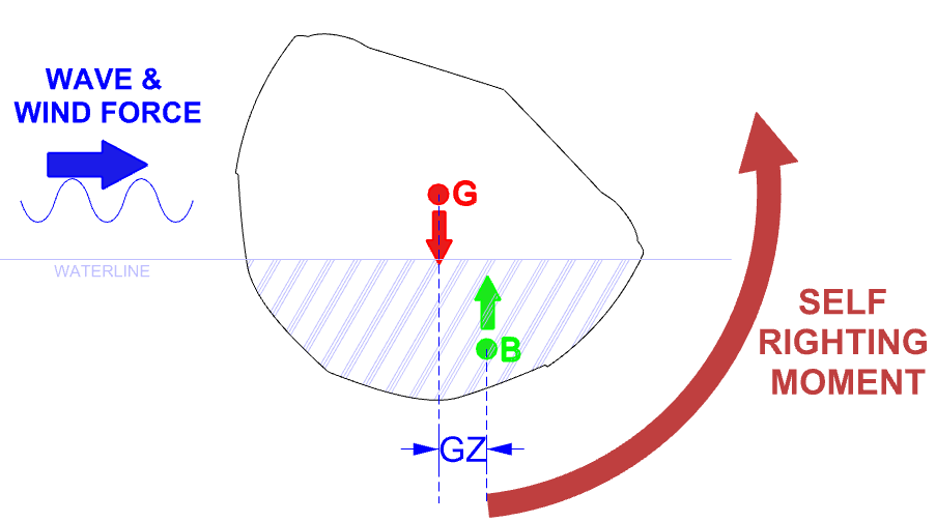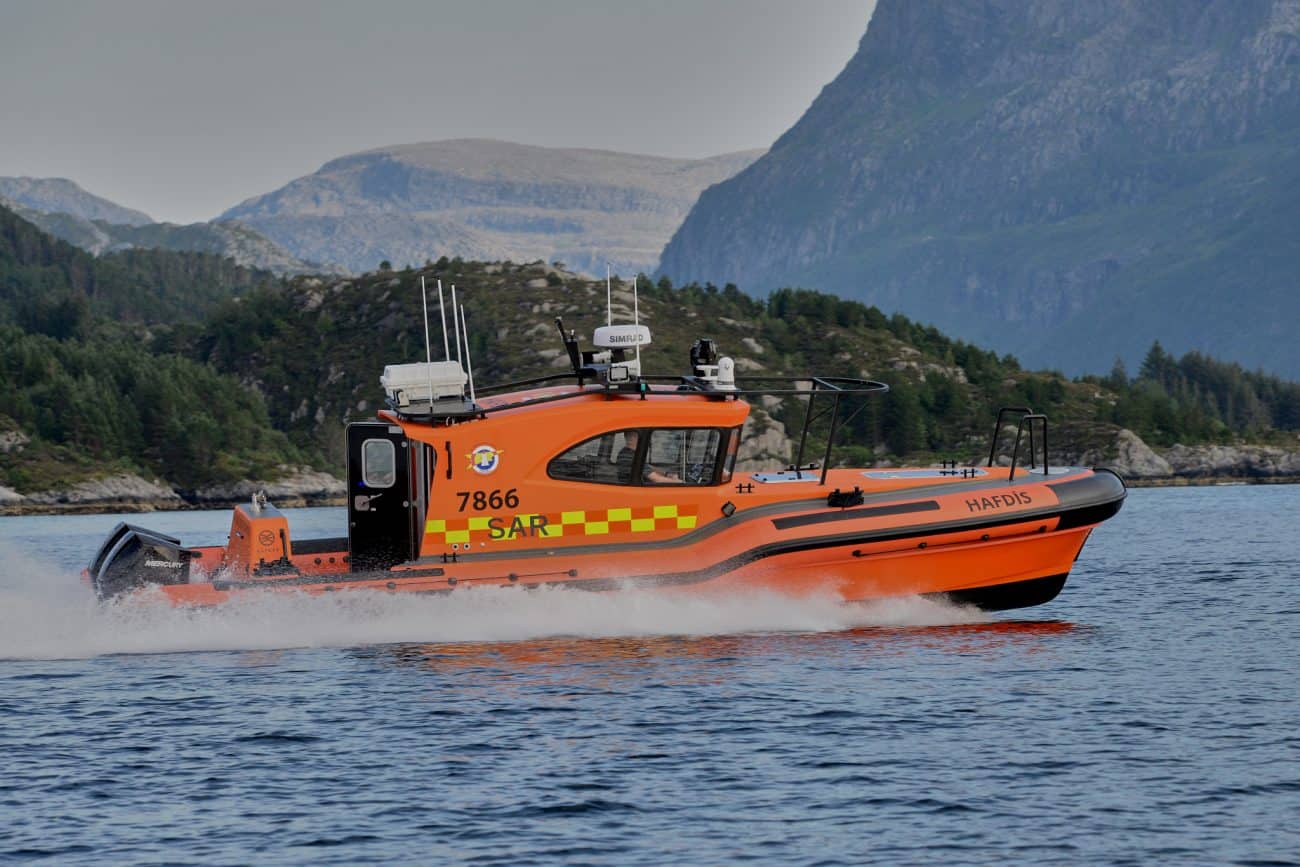A voyager who has ever encountered tremendous waves or heavy wind riding in a boat must have observed how a boat heels at one side but rolls back to the upright state. A self-righting boat is the most correct choice if sea conditions are so poor that heels exceed angles.
When external forces like heavy wind or large waves push a boat and cause it to incline in a direction, a boat tends to get back to its self-right position because of the buoyancy force that emerges from the underwater hull shape.
However, based on the design, a boat can not get back to its initial position anymore after reaching a maximum angle of heel. The only boats which tend to get back to their upright condition, even up to a 180-degree inclination, are called self-righting boats.
How Does A Self-righting Boat Work?
Mighty wind pressure or pushing from large waves causes a boat heeling. However, in spite of the inclination, a well-designed boat tends to return to its upright condition.
The self-righting boat rolls back to the upright condition because of the positive righting moment. The underwater portion of the vessel creates a buoyancy force that manages to roll back to its initial condition. A self-righting boat can roll back to the upright condition even after 180 degrees of inclination.
The gravity force pushes downwards and the buoyancy force pushes the vessel upwards. So, when these two forces are not in a line, a rotating moment emerges that actually causes the self-righting action of a boat.
Thus, falling in a mighty storm, a boat naturally rolls from one side to another and attempts to get back to an upright condition.
How Can A Lifeboat Right Itself?
A lifeboat can right itself because of its self-righting moment. The self-righting moment in a lifeboat develops from the gravity and buoyancy force. The principle of uprighting can be better explained in the two following diagrams.

In a normal upright condition, the gravity force (G) is due to the self-weight of the vessel, and the buoyancy force (B) is due to the underwater pressure acting in a line. In this condition, the righting moment is zero. When external forces cause the heeling of the lifeboat, the shape of the underwater volume changes as the healing occurs.
Thus, the acting position of the buoyancy force also shifts. So, gravity force (G) and buoyancy force (B) do not act in a line anymore. Consequently, the distance between the gravity line and the buoyancy line, which is called righting lever (GZ), increases.

These two opposite forces cause a rotating moment on the lifeboat to right it back to the initial condition. The more is righting lever, the higher is the righting moment.
As long as the righting lever remains positive, the self-righting moment remains positive. This positive self-righting moment causes the lifeboat to roll back to the upright condition.
What Does Self-righting Mean?
Self-righting boat means a boat that can roll back to upright condition by itself even after mighty external forces like wind and wave cause the vessel upside down.
The vanishing stability of a self-righting boat is almost 180 degrees. The vanishing stability is an angle up to which a vessel shows a positive self-righting moment.
What Makes A Boat Self-righting
A boat to be self-righting must have the righting moment positive up to 180-degree inclination, which means even after a vessel gets upside down because of heeling.
The keel of this type of vessel needs to be very heavy and usually occupies most of the percentage of the total weight. So, the vessel becomes unstable in the inverted state and rolls back toward the upright position.
Furthermore, the topside of this type of boat remains watertight so that the buoyancy force can act on the vessel even if the vessel is inverted.
Are Pilot Boats Self-righting?

The boats that are used to facilitate the pilots’ transportation from one vessel to another are called pilot boats.
The capsize of the pilot boats is generally unexpected since they are usually considered self-righting.
However, in some cases, pilot boats have fallen in fatal and unexpected situations because of the steep waves of excessive heights and their direction of attack.
However, there are examples of the use of self-rightening pilot boats produced by Rafnar with ÖK Hull design from Rafnar Professionals models.
Can You Right A Capsize Yacht?
There are several ways to upright a capsized yacht. The choice of the method depends on the wind and wave conditions you are sailing in along with the yacht’s capsized state.
If your yacht is capsizing in the direction of the wind blowing, release the mainsheet and tiller. Then, climbing over to the top edge of the yacht, step over the side deck to make the way up to the daggerboard.
Another method is the scoop method. In this method, a heavy person stands on the centerboard, and another person is picked up aboard. Furthermore, the main sheet and jib sheet need to be released to minimize the wind effect when the yacht is in an upright condition.
The traditional method is turning the boat in a way so that the bow and wind directions are along a line. In that state, one of your crew members should keep the boat towards the wind and another one should stand on the centerboard. Then the first crew should get on board from the stern side and pull the other crews as well.
When the vessel is in completely upside-down condition, the centerboard can be moved back into its position. In such a condition, you should stand on the gunwale and pull on a jib sheet and lean out so that the boat comes to the horizontal capsized position. Then adopt a suitable righting technique to bring your yacht to a completely upright state.
- Types of Gas Carriers as per IGC Code – April 22, 2025
- Wind-Assisted Propulsion Systems (WAPS): A Game Changer for Maritime Decarbonization – February 6, 2025
- 10 Boat Salvage Yards in California – January 25, 2025




